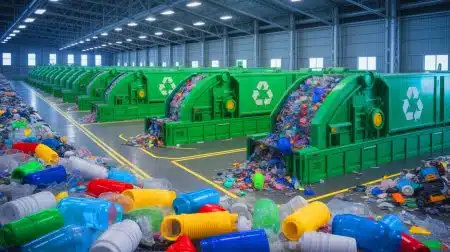| IN A NUTSHELL |
|
The world of innovation continues to surprise us with groundbreaking advancements. A team of scientists at Zhejiang University in Eastern China has developed a revolutionary self-cleaning glass that could transform the way we maintain surfaces. This glass, embedded with electrodes driven by electric fields, can remove dust particles in seconds, without the need for water or chemicals. It offers a sustainable solution to a pervasive problem, potentially reducing the time, effort, and cost associated with cleaning surfaces like windows and solar panels. This technological leap raises intriguing questions about the future of glass maintenance and its impact on industries reliant on clear, clean surfaces.
Revolutionary Self-Cleaning Technology
The development of electric-field-driven self-cleaning glass marks a significant innovation in surface maintenance technology. Traditional cleaning methods often struggle in dry, dusty environments and require frequent maintenance. In contrast, this new approach utilizes electric fields to move and detach particles from the glass surface. This technology is akin to electrodynamic screens, which have already shown promise in extraterrestrial applications, such as dust removal on Mars rovers.
However, past efforts have been hampered by a limited understanding of the mechanics involved in particle movement and detachment. By delving into the interplay between particle size and electric field strength, the Chinese researchers have crafted a thin, transparent glass that effectively cleans both organic and inorganic particles without manual intervention. This advance not only simplifies maintenance but also holds potential for a wide range of applications.
Dual Benefits: Cleaning and Prevention
Beyond its impressive cleaning capabilities, the self-cleaning glass also offers preventive benefits. When activated, the electric field repels airborne charged particles, reducing the accumulation of dust on the glass surface. This ‘particle shielding effect’ significantly limits dust buildup, even in challenging environments such as sandstorms or dusty weather conditions.
The glass’s transparency makes it ideal for applications where clear visibility is crucial. It minimally impacts visible light transmission, with most light loss occurring in the infrared spectrum. This characteristic makes it particularly suitable for solar panels, car windshields, greenhouse roofs, and high-rise building windows. The potential to maintain clarity and energy efficiency with minimal intervention is a game-changer for these sectors.
Practical and Scalable Design
The practicality of this new self-cleaning glass extends beyond its functionality. The design process involves etching electrodes onto a glass sheet and covering them with a protective film, utilizing common materials and established manufacturing methods. This compatibility with current industrial practices ensures that the glass can be produced efficiently and at scale, without the need for costly or specialized equipment.
The study, published in the journal Advanced Science, highlights the ease with which this glass can be integrated into existing production lines. Its simplicity and cost-effectiveness make it an attractive option for industries that prioritize both innovation and sustainability. By reducing the reliance on water and chemicals, this technology not only offers an environmentally friendly solution but also aligns with the growing demand for sustainable practices.
Potential Impact Across Industries
The implications of this innovative glass technology extend across various industries. For solar panel manufacturers, it offers a way to maintain panel efficiency by keeping surfaces clean and free of dust, potentially increasing energy yield. In the automotive industry, self-cleaning windshields could enhance driver safety by ensuring clear visibility in adverse weather conditions.
Building maintenance could also benefit significantly, particularly in urban environments where high-rise windows are difficult and costly to clean. By reducing maintenance costs and frequency, building owners could improve operational efficiency and sustainability. As industries grapple with the challenges of maintaining clean, clear surfaces, this technology provides a promising and practical solution.
As we consider the potential applications and benefits of this self-cleaning glass, one question remains: How will industries adapt to integrate this technology, and what further innovations might it inspire in the pursuit of sustainable and efficient surface maintenance?
Did you like it? 4.5/5 (26)








Wow, this sounds like something out of a sci-fi movie! Can I get this for my windows at home? 🏠
But what happens during a power outage? Does the glass still stay clean?
Sounds expensive. How much would it actually cost to install in a standard household?
Finally, something that stops my cat from smudging the windows! 😹
This is just another gimmick. I’ll stick to my microfiber cloth, thank you.
How does it handle bird droppings? Asking for a friend.
What about the energy consumption? Is it really minimal?
This could revolutionize skyscraper maintenance! No more dangling window cleaners! 🏢
I’m skeptical. How effective is it against sticky substances like tree sap?
Could this tech be applied to phone screens? That would be amazing! 📱